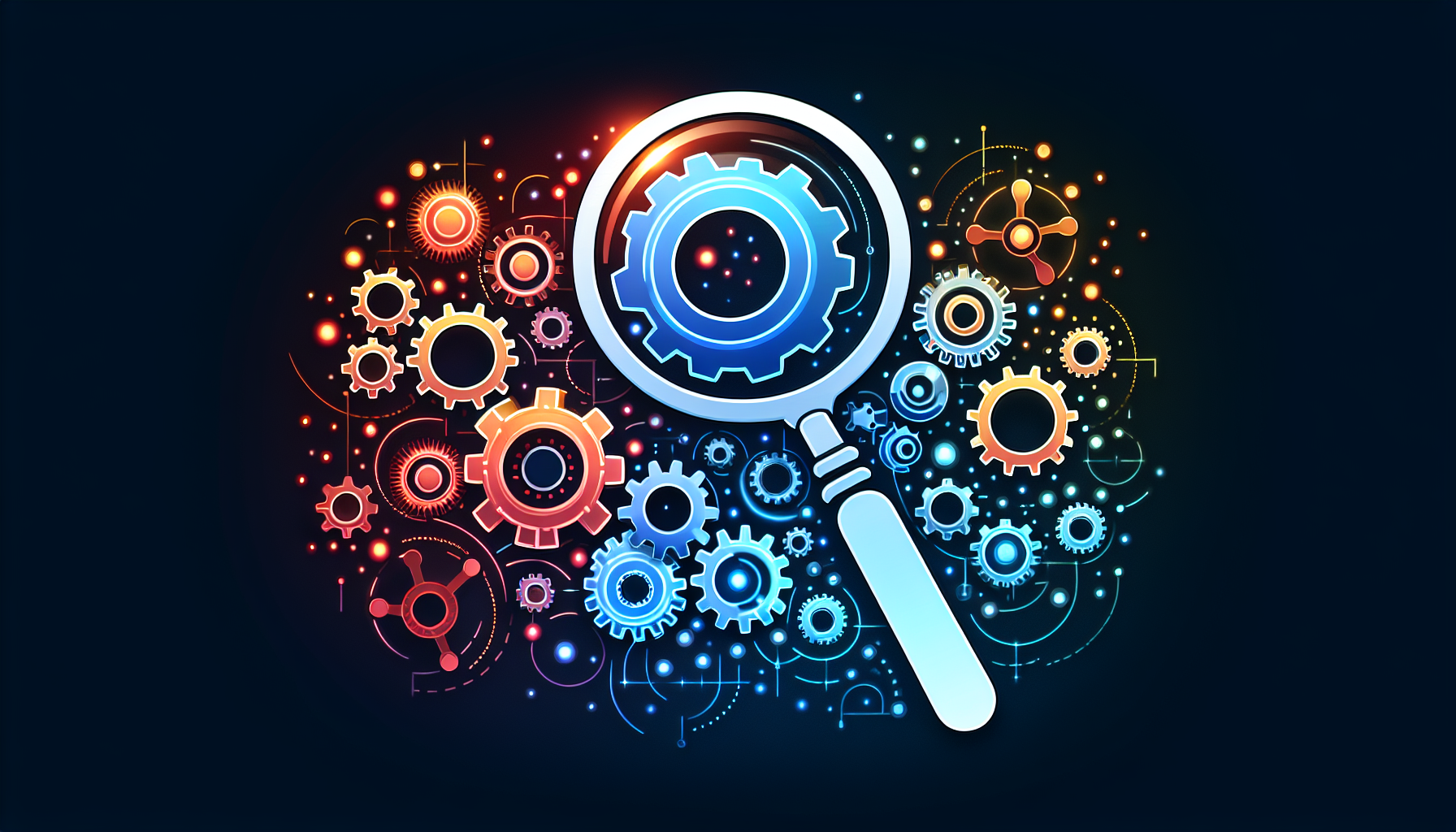So you’ve come across a fascinating application or service and you can’t help but wonder, “Is AI behind all of this?” We’ve all been there, curious to unravel the mysteries of technology. Luckily, I’ve got just the tips for you! In this article, we’ll explore the ways you can detect the use of AI in an application or service without any technical jargon. So sit back, relax, and let’s embark on this exciting journey together!
Introduction
In today’s technological landscape, Artificial Intelligence (AI) has become increasingly prevalent in various applications and services. From chatbots to personalized content delivery systems, AI is being utilized to enhance user experiences and optimize performance. If you’ve ever wondered how to detect the use of AI in an application or service, this comprehensive guide will equip you with the knowledge and tools to identify its presence. By understanding the key indicators and clues, you can gain insights into how AI is being integrated into your digital interactions.
Understanding AI
Before delving into the detection methods, it is crucial to have a basic understanding of what AI refers to. AI is a branch of computer science that focuses on developing intelligent machines capable of performing tasks that typically require human intelligence. These tasks include natural language processing, recognizing patterns, making recommendations, and adapting to changes in real-time. With advancements in technology, AI has become more sophisticated and is now being integrated into various applications and services.

Importance of Detecting AI Use in an Application or Service
Detecting the use of AI in an application or service holds significant importance for users. By knowing if AI is present, users can have a better understanding of the capabilities and limitations of the technology they are interacting with. It allows users to make informed decisions, set appropriate expectations, and utilize the features provided by AI systems effectively. Additionally, being aware of AI integration enables users to assess privacy concerns, comprehend data usage, and align their preferences with the functionalities provided.
Analyzing User Experience
Identifying Conversational Interfaces
A strong indication of AI usage in an application or service is the presence of conversational interfaces. These interfaces enable users to interact with the system using natural language inputs. Look for features like chatbots, voice assistants, or virtual agents that respond to user queries and provide relevant information. Conversational interfaces often employ AI techniques such as natural language processing to understand user intent and generate appropriate responses.
Recognizing Natural Language Processing
Natural Language Processing (NLP) is a vital aspect of AI. It involves the ability of a system to understand and process human language, enabling it to interpret user commands, extract meaning from text, and generate human-like responses. If an application or service exhibits advanced language comprehension and response generation capabilities, it is likely utilizing NLP techniques, indicating the presence of AI.
Observing Automated Recommendations
AI-powered recommendation engines have become ubiquitous in modern applications and services. These engines analyze user data, patterns, and preferences to provide personalized suggestions and recommendations. Observe if an application or service offers recommendations based on your behavior, interests, or past interactions. If you notice accurate and targeted recommendations, it is an indication of AI usage in the system.
Detecting Personalized Content Delivery
Another indicator of AI usage is personalized content delivery. AI algorithms can analyze user data and behavior to deliver tailored content, such as news articles, product recommendations, or social media feeds. Take note if an application or service adapts its content presentation based on your preferences and browsing history. If you observe a high level of customization and personalization, AI is likely actively involved in content delivery.

Examining Data Processing
Analyzing Data Patterns
Data patterns play a crucial role in AI applications. AI systems often require large amounts of data to train and improve their performance. If an application or service exhibits a strong emphasis on data collection, storage, and analysis, it indicates the potential use of AI. Look for features like data analytics, data-driven decision-making, or data-driven insights generation to recognize the presence of AI-based data processing.
Identifying Data Augmentation Techniques
Data augmentation refers to techniques that enhance the quantity or quality of available data. AI systems often utilize data augmentation to improve model performance. Look for evidence of techniques such as data synthesis, data transformation, or data expansion in the application or service. If you notice an emphasis on generating diverse data subsets or augmenting existing data, it suggests AI utilization for data processing purposes.
Detecting Machine Learning Algorithms
Machine Learning (ML) is a branch of AI that involves the development of algorithms and models capable of learning from and making predictions or decisions based on data. If an application or service exhibits capabilities such as predictive analysis, recommendation systems, or anomaly detection, it is an indication of ML algorithms at work. Look for functionalities that require continuous learning and adaptation to identify the use of ML.
Recognizing Deep Learning Networks
Deep Learning (DL) is a subset of ML that focuses on building artificial neural networks capable of learning and modeling complex patterns. It is often used in image and speech recognition applications. If an application or service demonstrates robust capabilities in these areas, it suggests the presence of deep learning networks. Look for image recognition features, voice commands, or speech-to-text conversion functionalities to recognize the incorporation of DL techniques.
Identifying Real-Time Adaptability
Observing Dynamic System Behavior
Real-time adaptability is a prominent characteristic of AI systems. These systems can analyze and respond to dynamic changes and events instantly. Observe if an application or service exhibits adaptive behavior in response to user interactions or changing data inputs. If you notice the system adjusting its outputs, recommendations, or responses based on real-time updates, it signifies the presence of AI algorithms working behind the scenes.
Detecting Adaptive Responses
AI systems are designed to adapt and learn from user feedback or changing circumstances. Look for features such as personalized user experiences, content modifications based on user preferences, or adaptive algorithms that optimize performance over time. If an application or service displays the ability to adapt its behavior effortlessly, it suggests the utilization of AI techniques for real-time adaptability.
Recognizing Self-Learning Capabilities
One of the key strengths of AI is its potential for self-learning. These systems can continuously improve their performance and accuracy without explicit programming changes. Observe if an application or service showcases iterative learning cycles, continuous model updates, or self-correction mechanisms. If you notice performance enhancements or accuracy improvements over time, it signifies the presence of AI capabilities for self-learning.

Exploring Performance Metrics
Identifying Enhanced Efficiency
AI integration often leads to enhanced operational efficiency in applications or services. Look for signs of improved task completion times, optimized resource allocation, or streamlined processes. If you observe increased productivity, reduced manual effort, or automated decision-making, it suggests the utilization of AI algorithms for enhancing efficiency.
Detecting Improved Accuracy
AI systems have the ability to improve accuracy and precision in various tasks. Observe if an application or service demonstrates improved prediction accuracy, reduced error rates, or enhanced data analysis capabilities. If you notice consistently reliable results and precise outputs, it is indicative of AI-driven accuracy improvements.
Recognizing Faster Processing Speeds
AI technologies can significantly speed up processing times, enabling applications or services to handle complex tasks swiftly. Observe if an application or service demonstrates rapid response times, quick computations, or accelerated data processing capabilities. If you notice near-instantaneous actions or minimal latency, it signifies the presence of AI algorithms for faster processing speeds.
Observing Reduced Error Rates
AI-powered applications or services are designed to minimize errors and improve overall performance. Look for features such as error detection, error handling mechanisms, or automated error correction. If you notice a reduction in system errors, improved fault tolerance, or advanced error recovery processes, it suggests the utilization of AI techniques to reduce error rates.
Recognizing AI Libraries or Frameworks
Identifying Common AI Libraries
AI libraries provide pre-existing tools and resources for developers to implement AI functionalities in their applications or services. Look for popular AI libraries such as TensorFlow, PyTorch, or scikit-learn in the technical documentation or references of an application or service. If you find mentions of these or other common AI libraries, it suggests the utilization of AI frameworks to integrate AI capabilities.
Detecting Specialized AI Frameworks
In addition to common AI libraries, specialized AI frameworks are often used to build more specific AI functionalities in applications or services. Look for mentions of specialized frameworks like OpenAI, Caffe, or Keras. If you find references to these or other specialized AI frameworks, it implies the application or service has incorporated specialized AI tools to address specific AI requirements.

Examining User Feedback
Analyzing User Satisfaction Surveys
User satisfaction surveys can provide valuable insights into the presence and effectiveness of AI in an application or service. Look for survey questions related to AI features, AI-driven personalization, or AI-generated recommendations. Analyze survey responses to identify user satisfaction levels with AI functionalities. Higher satisfaction levels indicate successful integration and utilization of AI.
Observing Positive Experience with AI Features
Read user reviews, testimonials, or comments to gather information about the user experience with AI features. Positive feedback regarding AI-driven functionalities, personalized content delivery, or accurate recommendations suggests the successful integration of AI in the application or service. User comments praising the intuitive nature and efficiency of AI-driven components provide a clear indication of AI usage.
Detecting User Complaints Related to AI
Conversely, user complaints related to AI can also shed light on its presence. Look for negative feedback regarding the accuracy of recommendations, unintuitive behavior, or system errors attributed to AI functionalities. User complaints may indicate areas where the application or service may need improvement in terms of AI integration or user experience with AI features.
Reviewing Technical Documentation
Analyzing Application’s Official Documentation
Review the technical documentation provided by the application or service to identify any mentions of AI technologies. Look for sections discussing AI algorithms, AI models, or AI-related methodologies. Analyzing the technical documentation can help you gain insights into the level of sophistication of the AI implementation and its impact on the application or service’s functionalities.
Identifying Mentions of AI Technologies
Pay attention to specific mentions of AI technologies like machine learning, deep learning, natural language processing, or recommendation systems. Look for descriptions of AI-driven processes, features, or data processing techniques. If you find explicit references to AI technologies, it confirms the presence of AI in the application or service.
Recognizing Integration of AI Services
Some applications or services integrate third-party AI services to leverage advanced functionalities. Look for mentions or partnerships with AI service providers like IBM Watson, Google Cloud AI, or Microsoft Azure AI. References to the integration of AI services indicate the utilization of external AI capabilities, enhancing the application or service’s functionalities.

Investigating Developer Background
Identifying AI Expertise of Developers
Research the background and expertise of the developers behind the application or service. Look for information on the developers’ skills, qualifications, certifications, or previous experience in AI-related projects. If the developers have a strong background in AI, it suggests a higher likelihood of AI integration in their application or service.
Recognizing Partnerships with AI Companies
Developers often collaborate with AI companies to leverage their technologies and expertise. Look for partnerships or mentions of collaborations with AI-focused companies like OpenAI, DeepMind, or Amazon Web Services AI. If the developers have established partnerships with renowned AI companies, it signals a strong commitment to AI integration in their application or service.
Observing Publications or Patents Related to AI
Publications or patents centered around AI technologies indicate the expertise and involvement of developers in the field. Investigate if the developers have published research papers, articles, or filed patents related to AI. If you find evidence of their contributions to the AI domain, it suggests a high likelihood of AI implementation in their application or service.
Examining Terms of Service and Privacy Policies
Identifying AI-Related Clauses
Carefully review the terms of service and privacy policies to identify any clauses related to AI usage. Look for sections discussing data collection for AI purposes, AI-driven recommendations, or language around automated decision-making. Clauses related to AI provide clear indications of its presence and usage in data processing and functionality generation.
Detecting Data Usage for AI Purposes
AI technologies heavily rely on data for training models and improving performance. Pay attention to the privacy policies that mention data usage for AI purposes. Look for statements regarding data collection, storage, anonymization, or sharing for AI-related functionalities. If the policies explicitly state data usage for AI purposes, it confirms the integration and utilization of AI in the application or service.
By carefully examining these various aspects, you can confidently identify if AI is being used in a particular application or service. Understanding the presence of AI enables you to make informed decisions, recognize the capabilities and limitations of the technology, and manage your privacy concerns effectively. With this comprehensive guide, you are well-equipped to navigate the digital landscape and harness the power of AI in your interactions with applications and services.






Leave a Reply